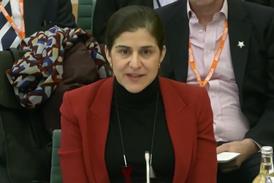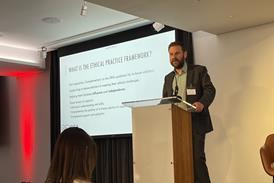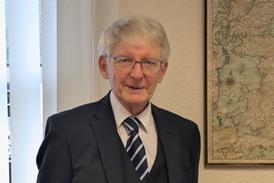Newspaper Readers in late 1992 could have been forgiven for thinking that a new creature had been born .
.
.
'the gagging order'.
Occasionally, during the media frenzy which followed the acquittals in the so-called 'Matrix Churchill trial', some of the more responsible journalists made passing reference to this creature's proper name, public interest immunity (PII) certificate.
It soon became clear that little was known about PII certificates.
They are certificates, usually by a minister, occasionally by a senior official, which seek to protect a government department from an obligation to produce relevant documents to an opponent in litigation, on the basis that production of the document would be harmful to the state.
They have been used in litigation for decades but ordinarily in civil rather than criminal proceedings.
There is consequently a dearth of authority as to the proper use of PII certificates in criminal proceedings.
That absence of authority was recognised during the preliminary hearings of the Matrix Churchill case.PII certificates in criminal proceedings are designed to defeat disclosure of documents to the defence which are conceded to be relevant and which ordinarily would have to be produced by the prosecution following its duty to disclose.
Because of the potential for harm to a defendant's case in a successful claim of immunity, any deployment of a PII certificate needs to be resisted as strenuously as possible.
Unfortunately, one of the difficulties a defendant faces is that certificates are produced entirely at the discretion of the prosecution, often as some sort of trump card to defeat the common law duty to disclose.
For that reason, a claim for immunity is not something which can be considered in advance and it can only be responded to after the claim has been made.Public interest immunity can be claimed in one, or both, of two forms.
A 'class claim' is made in respect of documents which fall into the category of advice to ministers, discussions preparing advice to ministers or discussions between ministers.
A 'contents claim' is made in relation to the contents of a particular document.
In making a claim for immunity the minister, who is supposed to be assisting the judge, should set out the reasons why the claim is being made.
That at least is the theory.
Sir Richard Scott's inquiry has produced a fascinating insight into what actually happens in practice.
Importantly for anyone considering the validity of a claim for immunity, the attitudes and perceptions that have shaped policy in the deployment of PII certificates have been fully exposed.
What has emerged is that government practice has been to approach class claims by interpreting generously in the government's favour the type of document covered.
Rather than restricting the scope of a class claim to highly confidential or sensitive documents dealing with high policy the words 'class claim' have been regarded as being sufficiently wide to take in a vast range of documents from the completely innocuous to the highly sensitive.
As long as a document moves within or between departments that has been regarded as being sufficient.
The product of that sort of approach is that documents which may have little, if any, sensitivity but nevertheless considerable relevance are withheld from a defendant simply because they fall within the perceived scope of a class claim.
If this is not a recipe for potential injustice it is difficult to know what is.
It has also emerged that ministers were being advised that they had a duty to sign certificates claiming immunity in respect of any document falling within the broadly defined class.
Insofar as they accepted that advice, ministers were not applying their personal political judgment as to the effect of disclosure and were therefore failing to provide the assistance which judges need in order to perform their difficult balancing act.
The proper test which any minister should apply, namely whether or not withholding the documents was necessary for the proper functioning of the public service, was not being satisfied.
In the Matrix Churchill case Michael Heseltine was a notable and honourable exception.
The practice had grown of using PII cer tificates as a matter of administrative convenience rather than their use being a properly and carefully exercised ministerial discretion.
What had happened was that a procedure designed and intended properly to protect the government from disclosing material which was genuinely injurious to its interests had become distorted into a system which allowed for a blanket withholding of relevant information.
Fortunately, one of the specific areas of Sir Richard Scott's remit was to examine the use of PII certificates in the Iraqi prosecutions and to comment as appropriate.
It is highly significant that his examination will relate to criminal proceedings rather than civil.
The risk of loss of liberty in the event of conviction in criminal proceedings means that it is critically important that there should not be unfairness as between the positions of prosecution and defence.
The historical use of PII certificates has more than significant potential to create precisely that.
This is particularly so in the use of class claims rather than contents claims.
It is sincerely to be hoped that changes in this area of the law of disclosure will flow from Sir Richard Scott's report.
The potential for injustice that exists in the use of PII in criminal cases requires that its future use in criminal trials should be seriously questioned.
If PII as a concept remains in place then there can surely be no place within its operation for class claims.
One can see that in certain circumstances, if PII is to survive, that contents claims should be made but class claims should, in any fair and reasonable criminal process, never be allowed to exist.



























No comments yet